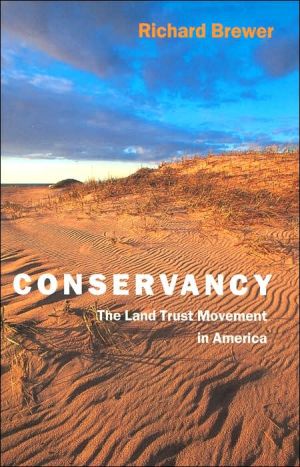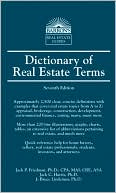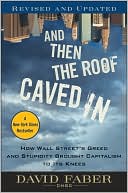Conservancy: The Land Trust Movement in America
Land trusts, or conservancies, protect land by owning it. Although many people are aware of a few large land trusts--The Nature Conservancy and the Trust for Public Land, for instance--there are now close to 1,300 local trusts, with more coming into being each month.\ American land trusts are diverse, shaped by their missions and adapted to their local environments. Nonetheless, all land trusts are private, non-profit organizations for which the acquisition and protection of land by direct...
Search in google:
The first complete treatment of the U.S. land trust movement as a crucial feature of current efforts to protect the environment. Library Journal Brewer (biological sciences, emeritus, Western Michigan Univ.; The Science of Ecology) takes a panoramic view of land conservancy in the United States. Previous works on this topic-almost all of which are out of print-focus on either specific regions or the activities of a specific group. The author lays out a uniquely American movement of preserving natural land through its acquisition by private nonprofit organizations. He presents a bit of its history, dating from the mid-1800s, and insight into the various incarnations that have evolved. Most of the land conservancy activities fall under the sponsorship of more than 1300 small local groups (although Brewer also discusses three major national trusts: the Nature Conservancy, the Trust for Public Land, and Farmland Protection). Having served as president of the Southwest Michigan Land Conservancy, he holds these "small" groups in high esteem, and to that end his book is also a how-to manual on establishing land trusts. Recommended for public and academic libraries supporting environmental policy or ecology programs.-Margaret F. Dominy, Drexel Univ. Lib., Philadelphia Copyright 2003 Reed Business Information.
PrefaceIntroduction: Saving Land the Old-fashioned Way1Ch. 1History13Ch. 2Sprawl41Ch. 3Why Save Land?57Ch. 4Who Will Save the Land?78Ch. 5Choosing Land to Save97Ch. 6Stewardship115Ch. 7How to Save Land139Ch. 8Defending Conservation Easements163Ch. 9The Land Trust Alliance176Ch. 10The Nature Conservancy185Ch. 11The Trust for Public Land216Ch. 12Farmland Protection227Ch. 13Trails and Greenways253Ch. 14A Diversity of Local Land Trusts269Ch. 15A Cleaner, Greener Land290Notes295Glossary323Bibliography325Index327
\ From the Publisher"Brewer...takes a panoramic view of land conservancy in the United States...[and] his book is also a how-to manual on establishing land trusts. Recommended for public and academic libraries supporting environmental policy or ecology programs."--Library Journal\ "A must-read for people interested in land conservation! Written for land trust members, volunteers and supporters --as well as anyone concerned about land use and the environment. This is the first comprehensive treatment of land trusts that combines a historical overview of the movement with more specific information on the different kinds of land trusts that exist and the problems they face."--The Land Trust Alliance\ "This book fills a void. It is the first to comprehensively trace the history, the people, the spirit, and the present state of the art in land trusts. It is a helpful guide for community planners, land trust board members, employees, donors, and persons interested in the conservation ethic of our time."--Planning and Zoning News\ "The book is an important contribution to understanding a new and growing segment of the conservation movement. It is well written, and the author's style, one that should appeal to a broad audience, makes it an enjoyable read."--Human Ecology\ \ \ \ \ \ Library JournalBrewer (biological sciences, emeritus, Western Michigan Univ.; The Science of Ecology) takes a panoramic view of land conservancy in the United States. Previous works on this topic-almost all of which are out of print-focus on either specific regions or the activities of a specific group. The author lays out a uniquely American movement of preserving natural land through its acquisition by private nonprofit organizations. He presents a bit of its history, dating from the mid-1800s, and insight into the various incarnations that have evolved. Most of the land conservancy activities fall under the sponsorship of more than 1300 small local groups (although Brewer also discusses three major national trusts: the Nature Conservancy, the Trust for Public Land, and Farmland Protection). Having served as president of the Southwest Michigan Land Conservancy, he holds these "small" groups in high esteem, and to that end his book is also a how-to manual on establishing land trusts. Recommended for public and academic libraries supporting environmental policy or ecology programs.-Margaret F. Dominy, Drexel Univ. Lib., Philadelphia Copyright 2003 Reed Business Information.\ \








